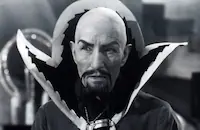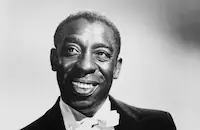Safe in Hell

Brief Synopsis
Cast & Crew
William A. Wellman
Dorothy Mackaill
Donald Cook
Ralf Harolde
John Wray
Ivan Simpson
Film Details
Technical Specs

Synopsis
The services of New Orleans call girl Gilda Karlson are requested by a man whose wife is out of town. On arrival, she discovers that the man is Piet Van Saal, whose previous unwelcome advances had led her into prostitution. When Gilda tries to leave, they struggle and she hits him with a vase. Van Saal collapses and Gilda believes he is dead. When the room then catches on fire, she runs away. The next morning, she learns that the building burned down, and that she is wanted for Van Saal's murder. Just as she is about to run away, her seaman boyfriend, Carl Erickson, arrives in town after a long voyage. He is now an officer and earns enough money to get married. Gilda insists that she can never marry him, and when Carl demands an explanation, she tells him that Van Saal broke into her room while she was working as his secretary, his wife found him there and fired her. After that, she had Gilda fired from every job she took until finally she had to resort to prostitution. At first Carl is furious at Gilda, but when he hears the approaching police sirens and realizes that he still loves her, he relents and smuggles her aboard his ship. He takes her to an island in the Caribbean from where criminals cannot be extradited. Gilda is the only white woman on the island, which is inhabited mainly by criminals. Finding no minister on the island, Carl and Gilda are married in a ceremony they invent themselves. Carl continues his voyage, leaving Gilda behind, sworn to faithfulness. The men at the hotel all try to seduce her, but Gilda remains true to her vow, eventually impressing everybody with her sincerity. The only man who still has designs on Gilda is Bruno, the island's executioner. He steals the money that Carl sends her, hoping to convince her that she has been forgotten. One day, Van Saal arrives on a ship. Although everyone believes him to be dead, he actually survived the fire, and he and his wife illegally collected his life insurance. Now he intends to hide out on the island until things quiet down. Realizing that she did not actually murder Van Saal, Gilda is eager to return home. Van Saal tells everyone about Gilda's past, and one of the men, believing he is entitled to her favors, attacks her. Bruno saves her from the assault and gives her a gun, telling her that, although they are illegal on the island, she can have one with his permission. Later, when Van Saal breaks into Gilda's room, she shoots him. One of the hotel guests, a crooked lawyer, defends her at the trial. She is about to be acquitted when Bruno tells her that even if she gets off, he will jail her for possession of a deadly weapon. He suggests that if she will sleep with him, he will let her go. Rather than break her promise to Carl, she confesses to murder, preferring death to dishonesty. When Carl returns, she agrees to meet him in New Orleans, but after his ship leaves again, goes to her death, having kept her vow.

Director

William A. Wellman
Cast

Dorothy Mackaill

Donald Cook

Ralf Harolde

John Wray

Ivan Simpson
Victor Varconi

Nina Mae Mckinney

Charles Middleton

Clarence Muse
Gustav Von Seyffertitz
Noble Johnson

Cecil Cunningham
Morgan Wallace
George Marion Sr.
Crew

Videos
Movie Clip


Trailer
Film Details
Technical Specs

Articles
Safe in Hell
Mackaill plays Gilda, a character who - in the best Wellman tradition - chooses death over dishonor. A prostitute who believes she has killed one of her clients, Gilda escapes with her true love's aid to a Caribbean island from which criminals cannot be extradited. "You are safe from jail and gallows - safe in Hell," says the island's jailer and executioner. But when her old nemesis, alive after all, shows up on the island and attempts to rape her, Gilda kills him for real. The jailer forces Gilda to choose between freedom, with certain sexual "concessions" attached, or the gallows.
An interesting footnote to Safe in Hell is that Wellman cast two popular black actors of the day, Nina Mae McKinney and Clarence Muse, as what are practically the movie's only positive and reputable characters. And this was a period in which blacks were routinely stereotyped or exploited. Frank T. Thompson, in a biography of Wellman, points out that, while the film's written script was filled with "a white writer's idea of 'Negro dialect,' no such talk reaches the screen. Either McKinney and Muse had enough clout to demand that they speak in normal language or Wellman just wanted to avoid a convenient cliche."
Director: William A. Wellman
Art Direction: Jack Okey
Screenplay: Maude Fulton, Joseph Jackson (from a play by Houston Branch)
Cinematography: Sidney Hickox
Editing: Owen Marks
Costume Design: Earl Luick
Cast: Dorothy Mackaill (Gilda Carlson), Donald Cook (Carl Bergen), Ralf Harolde (Piet Van Saal), Morgan Wallace (Bruno), Nina Mae McKinney (Leonie), Clarence Muse (Newcastle).
BW-74m.
by Roger Fristoe

Safe in Hell
Quotes
Trivia
Notes
The film's pre-release titles were Lady from New Orleans and Lost Lady. According to news items in Film Daily, Lillian Bond, David Manners, Boris Karloff, John Harrington, Montague Love and Richard Bennett were originally announced in the cast, and Michael Curtiz was originally assigned to direct. Barbara Stanwyck was also considered for the lead. The song "When It's Sleepy Time Down South" is sung by Nina Mae McKinney. Some modern sources have stated that at a time when the portrayal of African Americans in films was stereotyped, Nina Mae McKinney and Clarence Muse played the only two reputable people in the film. The film was advertised as being "Not for Children."















